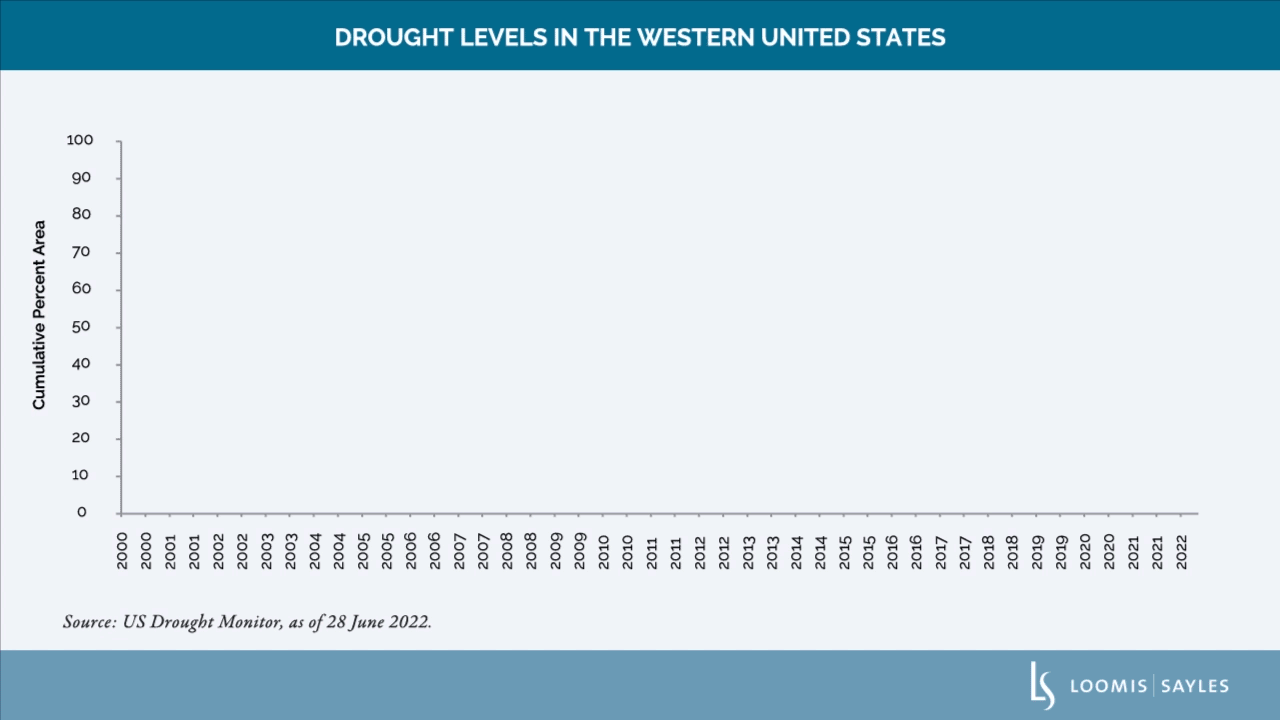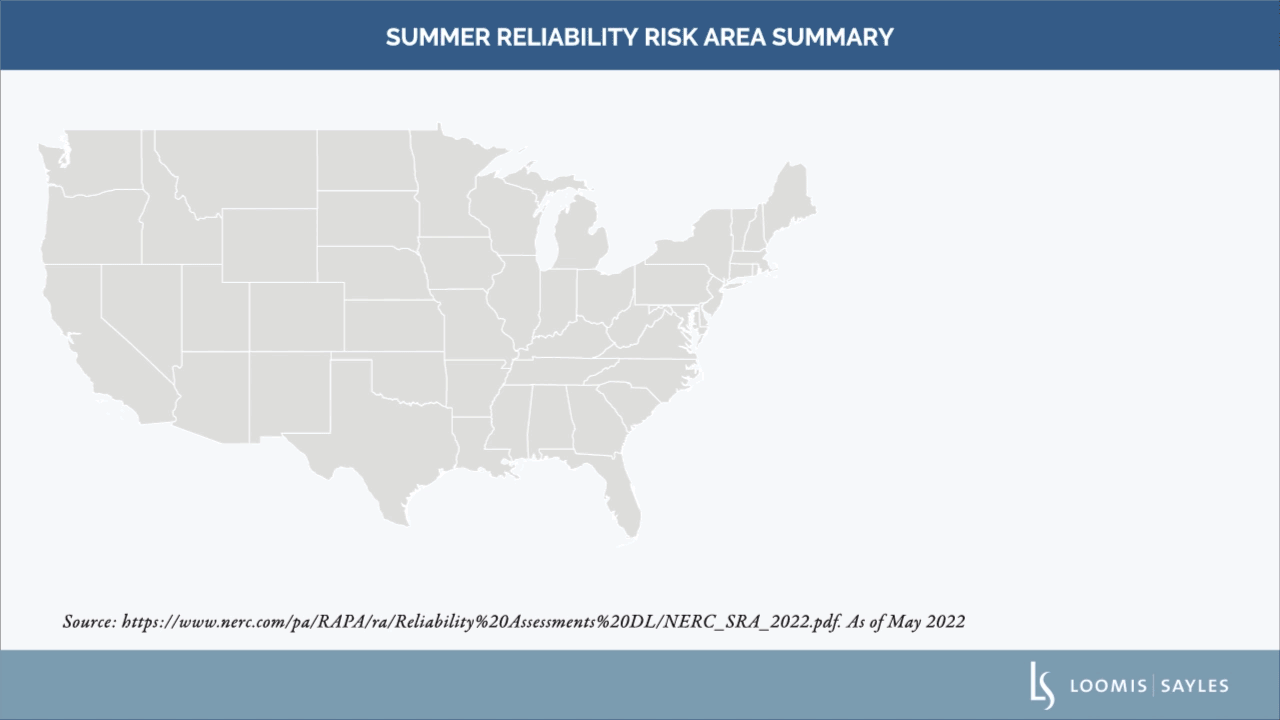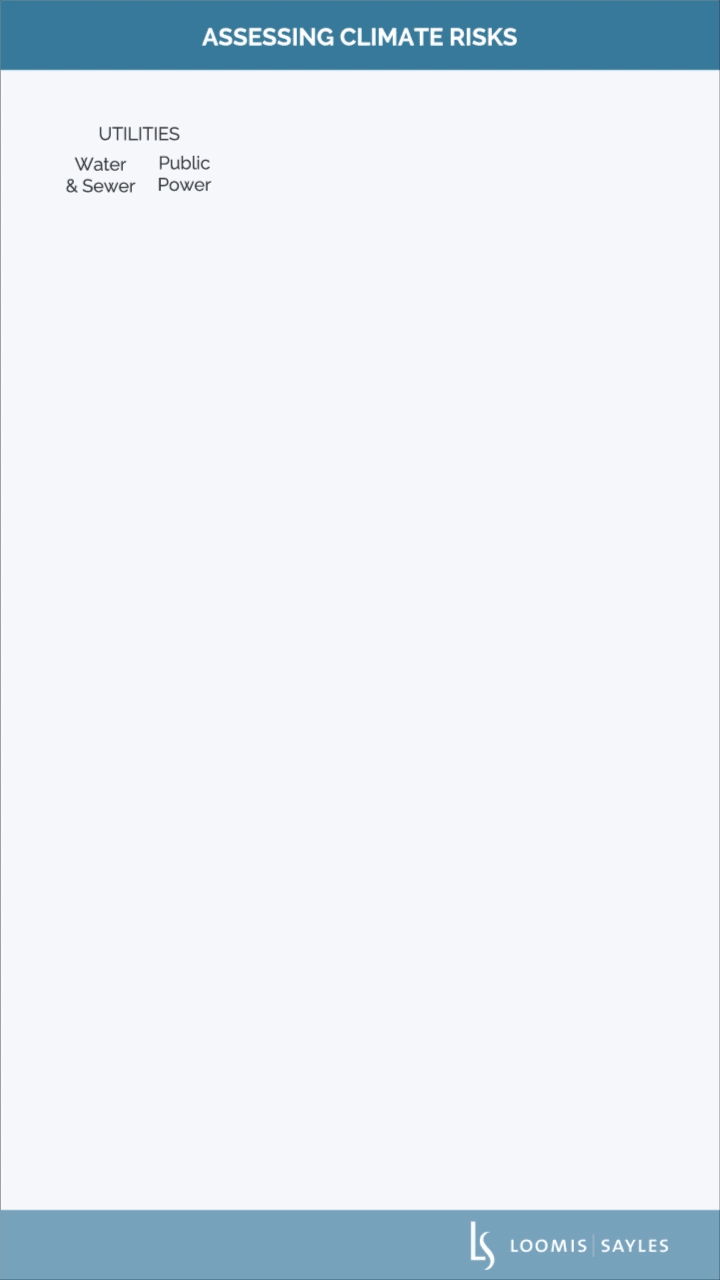Municipal bond issuers are often linked to tangible, physical assets directly exposed to the effects of climate change. Over the long term, we believe municipalities will increasingly have to contend with the effects of this exposure, such as preparing for rising sea levels, managing constraints on local water supply, or rebuilding infrastructure after a hurricane or wildfire. This series will explore how various climate-related risks and policy responses could impact municipal issuers and describe our approach to assessing those risks.
In recent years, recurring drought conditions and rising temperatures have negatively affected large parts of the United States. According to the National Drought Mitigation Center, 76.4% of the western US was experiencing drought conditions at the end of June, with 38.1% under extreme drought.1 Continually hot, dry conditions have constrained local water supply for municipal water and sewer utilities and could stress public power utilities. Here, we’ll examine how these conditions can affect municipal utilities and how we approach these risks in our analysis.
Water and Sewer Utilities
With drought conditions increasing in frequency and severity, water supplies for retail and wholesale providers are likely to remain constrained, particularly in the western US. Persistent drought has forced many utility providers to rely more on expensive imported water from state or regional sources rather than local sources. However, state and regional sources generally have many stakeholders and some have begun reducing annual allocations to retail providers, underscoring the importance of water rights, which determine priority access to water supply. Additionally, some municipalities have implemented voluntary or mandatory conservation measures to help combat supply challenges, potentially decreasing customer demand.
For retail providers, this combination of higher costs and lower demand could pressure margins and reduce internal liquidity. Historically, water and sewer utilities have recouped costs via pass-throughs to customers or rate hikes. However, persistent drought conditions could challenge this practice.

Public Power Utilities
Power utilities are also exposed to the effects of climate change. Extreme weather events and drought conditions can stress electric grids and threaten power reliability—recent examples include the blackouts and price spikes from winter storm Uri in Texas in 2021 and rolling brownouts from a heatwave in California in 2020. According to the North American Electric Reliability Corporation (NERC), “several parts of North America are at elevated or high risk of energy shortfalls this summer due to predicted above-normal temperatures and drought conditions over the western half of the United States.”2 These disruptions can create significant supply and demand imbalances, potentially spiking spot market rates and increasing the price of purchased power for utilities in the wholesale market. In some cases, imbalances can lead to rolling brownouts to manage grid stability. We believe hydro power generation in the Pacific Northwest and northern California could remain particularly exposed to climate risk due largely to severe drought conditions in the region.

The transition toward renewable energy resources makes managing grid reliability more complicated in our view. Currently, 30 states have some form of renewable portfolio standards (RPS) or goals, some of which include 100% renewable power targets by 2045-2050.3 While the transition to renewables should help reduce carbon emissions, the intermittent and peaking nature of renewables may expose reliability issues. As fossil fuel resources retire, power grids could experience stress if demand spikes from heat waves and increased temperatures coincide with a period of lower renewable supply. We believe that power providers will need to carefully manage this transition by ensuring access to adequate supplemental power and storage capacity to maintain grid stability.
Assessing the risks associated with drought and extreme temperatures
Looking at municipal utilities from a long-term perspective, we believe that issuers that are proactively addressing climate change risks are more likely to have the flexibility to accommodate future changes. Factors in our analysis include, but are not limited to:
Bottom-up analysis can uncover opportunity
In our view, climate-change-related pressures on municipal utilities are likely to accelerate over time. Utilities provide essential public resources, and we believe proactive solutions and diligence in managing these pressures can promote economic stability and development. Additionally, the potential for migration trends related to climate factors is an associated long-term risk for local governments. For municipal bond investors, we believe that bottom-up credit analysis is important to help identify issuers that may be at risk and those that could be better equipped to navigate a challenging operating environment.
1https://droughtmonitor.unl.edu/CurrentMap/StateDroughtMonitor.aspx?West
2https://www.nerc.com/news/Headlines%20DL/May%2018%202022%20SRA%20Announcement.pdf
3https://www.ncsl.org/research/energy/renewable-portfolio-standards.aspx
MALR029359
Market conditions are extremely fluid and change frequently.
This blog post is provided for informational purposes only and should not be construed as investment advice. Any opinions or forecasts contained herein reflect the
subjective judgments and assumptions of the authors only and do not necessarily reflect the views of Loomis, Sayles & Company, L.P. Information, including
that obtained from outside sources, is believed to be correct, but Loomis Sayles cannot guarantee its accuracy. This material cannot be copied, reproduced or
redistributed without authorization. This information is subject to change at any time without notice.





